Search Results for: scriptshadow 250
 Emma Radacanu (last year’s winner)
Emma Radacanu (last year’s winner)
The next two weeks are two of my favorite weeks of the year.
That’s because the U.S. Open is on!!!
I fire up my wide-screen TV, turn on ESPN, and have luscious sweaty 4K bodies banging groundstrokes at each other in the background while I work.
Since I know you’re all dying to get my U.S. Open picks, here’s a quick preview of the tournament. This is Serena Williams’ last major tournament and, I’m afraid, she’s going to lose early. She’s just not in shape. So she can’t move to the ball fast enough to take on the top players. She might win a round. But she’ll be out by the second round for sure. With that said, her and her sister are playing doubles together. Since you don’t need to move as much in doubles, they might make a deep little run. I’d love to see that.
What’s so exciting about this U.S. Open is that there are no favorites on either side. If I had to bet, I would say that the Polish Punisher and number 1 seed, Iga Swiatek, will win the women’s tournament. But she’s far from a sure thing. Emma Raducanu, who won the tournament last year, has been disappointing since then and the whispers around the tour are that she’s a bigger one-hit-wonder than Devo.
On the men’s side, who the heck knows what’s going on. Djokovic is out because he’s not vaxxed. Medvedev has been playing stinky. Nadal is beat up and probably won’t make it to the second week. Wonder Boy, Alcaraz, who many are predicting will win double-digit grand slams, seems to have hit a plateau this season. The guy has the biggest forehand I’ve ever seen in my life but for whatever reason, he’s not unleashing it.
 Escape from Alcaraz
Escape from Alcaraz
I would love to see Kyrgios do well but he’s such a wild card. My pick for winning the tournament is either the Greek Freak, Stefano Tsisipas, or the Italian Non-Stallion, Jannik Sinner. Both have beautiful backhands, Sinner’s two-handed, and Tsisipas one-handed. I could watch these two crank backhands all day.
Speaking of spirited competitions, did anyone go to the movies this weekend? After looking at the box office numbers, it sure doesn’t seem like it. The top film, The Invitation, made just 7 million bucks. I’m not going to call it the death of cinema yet because they didn’t even release a big film. But 7 million!? Come on!
The studios and theaters seem to know your interest is waning so next Saturday, they’re offering movie tickets FOR JUST 3 BUCKS! It’s National Cinema Day, baby! I was definitely excited to take advantage of this but then I wondered, wait a minute, is there a movie out right now that I actually want to see?
 Daisy Edgar-Jones
Daisy Edgar-Jones
I noticed this “little movie that could,” Where the Crawdads Sing, just cross 80 million bucks. That 80 million, by the way, is just as much as Bullet Train. A movie about a girl living in a swamp is making just as much money as a Brad Pitt actioneer. Welcome to the bizarre world of Hollywood box office post-pandemic. I might go see the film for that alone. Also, I’ve made no secrets how much I love Crawdad star, Daisy Edgar-Jones, who came out of Normal People. This movie over-performing means she’s on the cusp of becoming the next big “it” girl.
One of the sadder results form this weekend is George Miller’s, “Three Thousand Years of Longing.” The film opened in 2500 theaters and took in just 2.8 million bucks. Why is this a big deal? Cause this is the guy who created one of the coolest movies ever in Mad Max: Fury Road! And his follow-up is this?
I think what George did was leverage his success with Fury Road to make this long-time passion project. And the thing with passion projects is that there tends to be a reason they’re hard to make. Namely, they’re not appealing enough to a big audience. So no one wants to finance them. But hey, I appreciate Miller for trying. He wanted to do something different. He did it. It didn’t work out. But that’s art. If we always knew what would hit, it wouldn’t be any fun.
One thing I’m noticing is that we are definitely knee-deep in a new era where mega-TV shows are now competing with theatrical movies. It used to be there was no competition cause you could only do so much with a TV budget. But when you get to see the real theatrical Hulk on TV now? When you get to see a 30 million dollar pilot with dragons? Or a billion dollar Lord of the Rings adaptation? Those are legitimate alternatives for going to the movies.
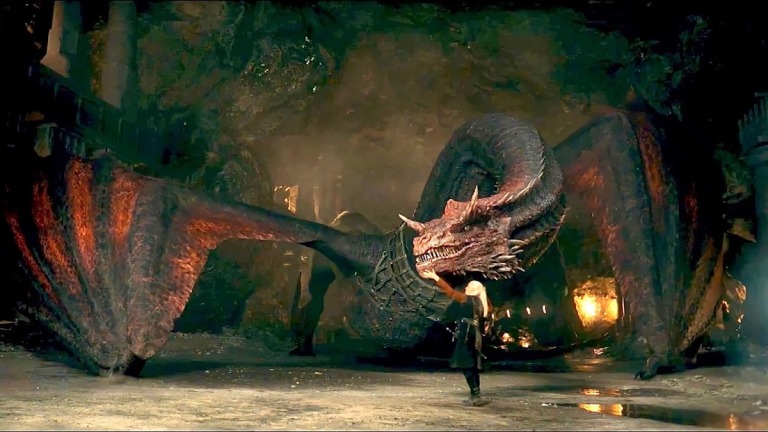
That’s not to say this is always going to be the case. I’m one of these people who isn’t convinced the streamers will be able to keep these budgets up. The reason they’re doing it now is because they’re trying to establish dominance in the fast-growing industry of streaming. But once the music stops and we know where everyone’s sitting, I think they’re going to start pulling back. They have to. There’s no way they can keep this insane spending up.
In the meantime, what are you going to watch? A movie (The Invitation) that stars the 11th most important character in the Fast and Furious franchise? Or a Star Wars show? I think the answer is obvious.
It’s yet another reminder that CONCEPT IS KING – something I was just talking about Thursday. When you’re coming up with movie ideas, you have to think like that guy who’s sitting there on a Thursday night, who may or may not want to go to the movies this weekend. He’s leaning towards not going cause there isn’t a new Marvel movie out. What are you giving that person that will make him want to go? It’s got to be a big juicy idea. Which reminds me, High Concept Showdown is coming people! So get those scripts ready.
What: AMATEUR SHOWDOWN – HIGH CONCEPT EDITION
When: Entries due December 1 by 8pm Pacific Time
How: E-mail me your title, genre, logline, any extra pitch you want to make about why your script deserves a shot, and, of course, a PDF of the screenplay.
Where: carsonreeves3@gmail.com
Anything else?: You can start sending in your scripts right now!
One minor story I caught from this weekend was the showings of two former, “WHAT THE HELL DID I JUST READ” script reviews. Bodies Bodies Bodies and Vengeance. I was shocked to find that both movies received relatively strong critical scores (Vengeance at 79% and Bodies Bodies Bodies at 86%). Cause I thought these scripts were beyond awful. Bodies Bodies bodies was a glorified game of drunken hide and seek. And Vengeance had one of the most despicable unlikable protagonists I’ve come across in a long time.
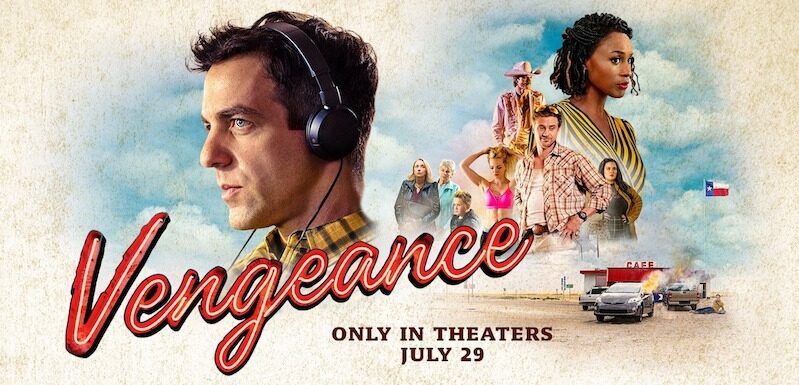
Why are these movies working for people? I don’t know for sure because I haven’t seen them yet, lol. But I do know that when the writer is also the director, there are two things you can drastically change about a script. The first is the stylistic look of your movie. Bodies Bodies Bodies looks a lot more stylistic than I imagined it would be. Which definitely helps give it its own identity.
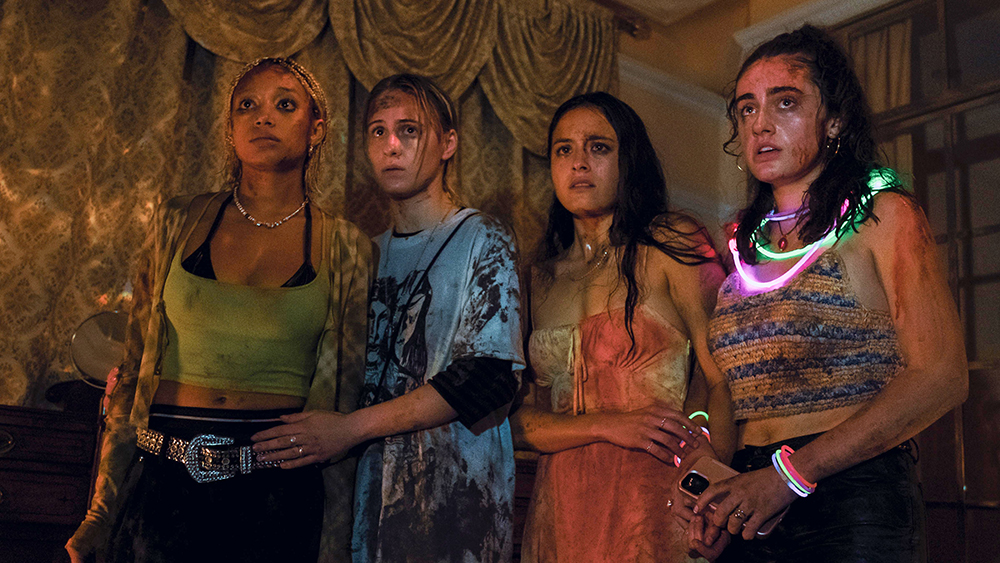
The other big thing you can do is soften the look and feel of a character onscreen who, on paper, was a big fat jerk. You can do this through casting. Or, in B.J. Novak’s case (who was the writer, director, and star), you simply play the character a lot nicer. And it looks like that’s what he did to offset how unlikable that character was on the page.
I’m all about admitting when I’m wrong about a script. I think it’s important for all screenwriters to understand why something works even if they, themselves, hate it. And I believe that’s what happened here. Although I’m curious, for those of you who saw the films, what did you think of them? Should I give them a shot? Or was my original analysis correct and they’re both benefactors of the current critical trend of propping movies up more for what they and the creators symbolize than how good they are?
Let me know in the comments.
And, oh yeah, a new newsletter is coming this week! Watch out for it in your inbox. I review one of the wilder premises I’ve ever seen for a big-budget film. I’ll be including a link to the script so you can check it out yourself (e-mail carsonreeves1@gmail.com if you want to be on the list).
Is Kevin Feige losing a handle on the quality of the MCU?
Genre: TV Show/Superhero
Premise: (from IMDB) Jennifer Walters navigates the complicated life of a single, 30-something attorney who also happens to be a green 6-foot-7-inch superpowered Hulk.
About: This series was created by Jessica Gao, which continues a recent Marvel trend of going with riskier and riskier showrunners. Up until this point, Gao’s biggest accomplishment was writing an episode of Rick and Morty. The show has had a strange press tour, with co-stars such as Jamella Jamil openly wondering, on social media, why her costume was so ugly. The show stars Orphan Black star Tatiana Maslany as the She-Hulk. The pilot was directed by Kat Coiro, who recently directed J. Lo in Marry Me.
Writer: Jessica Gao
Details: 35 minutes
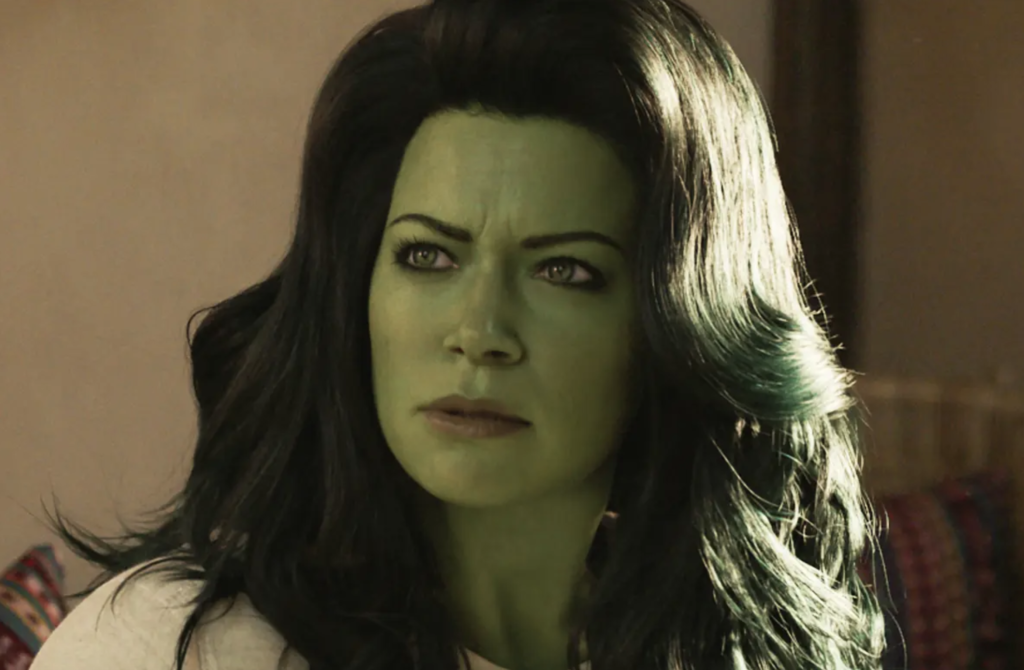
Marvel is implementing the same genius strategy Lucasfilm implemented in the 90s whereby they took their IP and laid it directly on top of already proven video game genres.
Side-scroller? Add Star Wars characters. RPG? Add Star Wars characters. First-Person Shooter? Add Star Wars characters.
Marvel realizes they can utilize this same strategy with their television shows. They have an endless number of TV genres they can lay their brand on top of. Sitcoms? Wandavision. High-school comedy? Ms. Marvel. Legal One-Hour Drama? She-Hulk.
It’s a clever strategy and I hope that, as they tighten the screws and perfect the formula, it will work for them.
Unfortunately, She-Hulk is going to be seen as one of the early test-cases that didn’t work. The reason for that is simple. It prioritizes message over story. And the thing about message-pushing TV is, even if you agree with the message, you still feel the manipulation, which breaks the suspension of disbelief, and prevents you from enjoying the experience.
We’ll get to that in a second. But first, here’s a quick breakdown of Episode 1. A young attorney named Jennifer Walters tells us (as she talks straight to the camera) that she’s an attorney but she wants to catch you up on how she got here.
This jumps us into a flashback where Jennifer is hanging out with her cousin, Bruce Banner (as in The Hulk), when they get in a car crash. During this crash, Bruce’s blood leaks onto an open wound of Jennifer’s, which means Jennifer can now turn into a Hulk too!
So Bruce whisks her away to his own private island where he spends the rest of the episode training her in the ways of Hulkness. When he explains that she’ll need to train for 10+ years before rejoining society, she freaks out and says she only needs one week. Hey, it worked for Luke Skywalker. Why not her? (note: I came up with this analogy, not the writer. The writer isn’t nearly that clever).
Her reason for *why* she only needs a week may have been the single most miscalculated line in the history of television. Which I’ll get to in a bit. But, anyway, we jump back to the present, where Jennifer is finishing up a case in the courtroom when a female villain bursts into the room, cliffhanging us until the next episode.
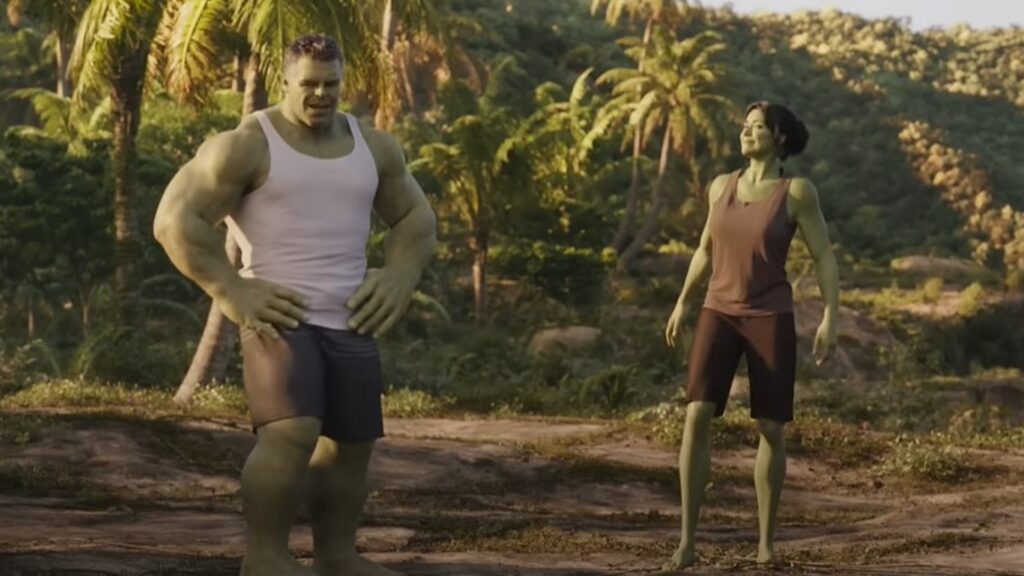
So I went and watched some interviews about this show and what I learned was that they originally wrote the season so the origin stuff – Jennifer becoming She-Hulk – wasn’t revealed until the final two episodes. When they test-screened it, everybody was confused. You had this big green woman walking into courtrooms without any explanation as to why.
So they hurriedly rewrote the first episode as the “origin story,” where we learn how Jennifer turned into She-Hulk.
It’s for this reason that the first episode is so problematic. It feels rushed from the start. For example, Jennifer and Bruce are driving their car in the mountains and, out of nowhere, a spaceship arrives, which distracts Jennifer enough that she crashes. This spaceship is never mentioned again. We have no idea who it was or why it was there.
The writers then make one of the classic “I’m a newbie screenwriter” mistakes where Jennifer keeps passing out as a cheap way to move her from location to location. She passes out after the crash, which allows us to jump to Bruce’s lab. She passes out again during one of Bruce’s tests, which allows us to jump to Bruce’s secret island.
People don’t routinely black out. So, when you’re doing that, the reader reels from your laziness. It feels like the writer isn’t even trying.
From there, we get the “fun and games” section where the Hulks play around with each other, tossing boulders into the atmosphere. It gets kind of fun, except that there’s this growing “men just don’t understand” subtext permeating the story. If Bruce is explaining something about being a Hulk, Jennifer sees it as “mansplaining.”
It’s mostly in a jokey way. But that’s when the show hits us with the line that’s now gone viral and which will be the nail in She-Hulk’s coffin. Because what the line says is, “This is a message show. We’re going to be propping up one gender over another. And if you don’t like that, buh-bye.” Which is their prerogative but it’s a fast way to lose half your audience. And why in the world would you want to do that?
*Ahem* 🗣 Say it louder for the people in the back 🗣 #SheHulk #TatianaMaslany pic.twitter.com/EWd57xbehr
— IMDb (@IMDb) August 18, 2022
Being this on-the-nose about ANYTHING isn’t going to work. There’s also such a generalization here from the character – painting gender with such a broad brush – that it makes her look ignorant. Which, in turn, makes us not like her.
One of my favorite movies from a couple of years ago was The Invisible Man. That movie was about the dangers of some men being toxic. And it never had a scene like this. Where the heroine spouts out on-the-nose dialogue about the state of the male gender. If ever there was an attacking line, it attacked the individual, her ex-husband. Not every person on the planet with a penis. Yet the movie gets its message across 1000x better than She-Hulk.
It’s frustrating because I like the actress here. And I like the idea of a superhero version of Ally McBeal (which is getting a sequel btw, BECAUSE of this show). But the second the show decided it wanted to be exclusive instead of inclusive, it was done. They may double-down with a series renewel out of spite for the blowback they’re getting. But mark my words, this series is toast.
Kevin Feige has to be careful because he’s starting to lose touch.
We just saw Top Gun pass Avengers Infinity War at the domestic box office. What is Top Gun known for other than being a really great movie?
ZERO MESSAGE!
All it cared about was entertaining. And audiences were like, “FINALLY! We don’t have to be preached to. For once!”
“Nope,” the biggest major release message film of the year, made 100 million less than the studio was hoping for.
They/Them is getting destroyed by the very critics who are so desperate to prop it up.
People are sick of the preaching. Yet She-Hulk is ready and willing to not only die on that hill, but become a martyr on it.
The thing is, there are ways to push messages and get the audience on your side. One way is to take the piss out of the preaching. When Jennifer says, “Men are toxic and the patriarchy is in charge and blah blah blah,” have Bruce say something like, “Okay, calm down there, Don Lemon.” Have more fun with it instead of slamming us over the head with a hammer, implying that if we don’t weep for Jennifer, we’re bad.
Unfortunately, even if this wasn’t an issue with She-Hulk, the writing isn’t strong enough to have saved it. We can see that right from the start. Jennifer turns to the camera and starts explaining things to the audience. This is fine. Breaking the 4th Wall has been done forever and is a legitimate creative option.
But then she refers to what she’s in as a “legal show.” In others, she goes beyond the fourth wall to the fifth wall. She’s not just talking directly to the audience. She’s telling you that this thing she’s a part of? She’s just an actor in it. They might as well have turned the camera to show the crew shooting the shot. That’s how little they care about creating an illusion.
It’s sloppy. It’s a cop-out. It gives them an excuse to be lazy cause now their hero can say stuff like, “Sorry for that lame scene! We didn’t have a lot of time to write it! Zoinks!”
Between that and the random spaceship and the blackouts and the over-the-top messaging – this is just a poorly written show. The only reason it seems halfway professional is because of all the money they spent on it. But from a writing perspective, it’s hackneyed and should be used as an argument to reestablish some quality control at the Marvel headquarters.
[x] What the hell did I just watch?
[ ] wasn’t for me
[ ] worth the stream
[ ] impressive
[ ] genius
What I learned: What a lot of writers don’t realize is that when you preach, you literally achieve the OPPOSITE of what you were trying to do. We see you’re trying to insert a message into our head, which makes us resist the message. Instead, sell your message through SHOWING as opposed to telling. By showing us just how psychotic and obsessed the ex-husband was in The Invisible Man, we received the deeper message about male toxicity invisibly.
Genre: Action/Sci-Fi/Period
Premise: When an alien predator arrives on earth in 1719, it sets its sights on the great warriors of the Comanche nation, only to learn that one of them, a young woman, might be more than he can handle.
About: This movie comes from Dan Trachtenberg, who I’ve been a fan of all the way back to his “Portal” short film days, and then when he went on to make 10 Cloverfield Lane. I was surprised when his career stalled so I was very happy to hear he was entrusted with a franchise as iconic as The Predator. The script for Prey was written by Patrick Aison, best known for his work on Wayward Pines. The film cast the single coolest last name in all of Hollywood for its female lead warrior, Amber Midthunder.
Writers: Patrick Aison and Dan Trachtenberg (characters by Jim & John Thomas)
Details: 99 minutes
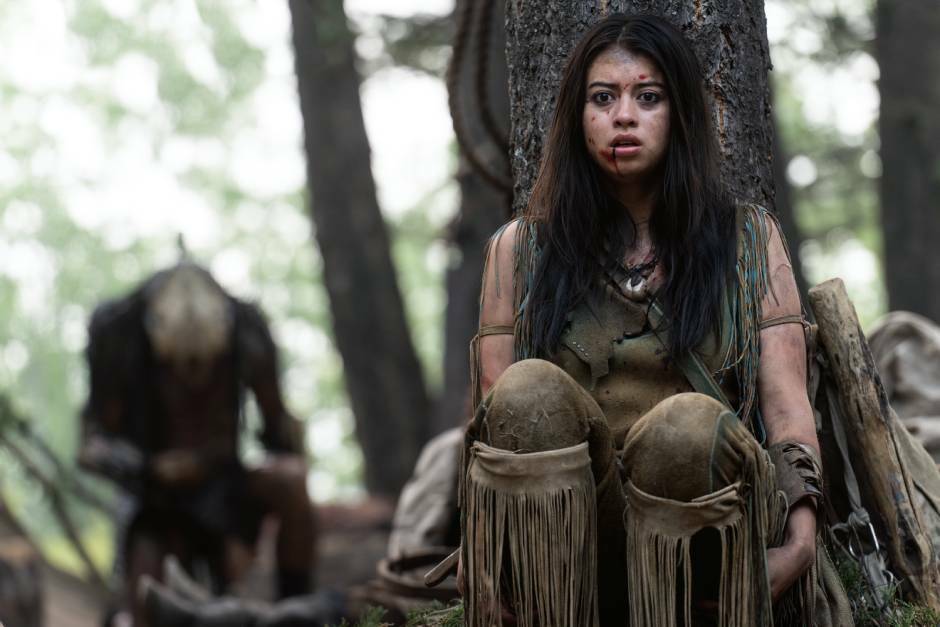
I was all over this when it was first announced.
I think my exact words were, “This is how you bring something fresh to an old franchise!”
The basic plot for Prey is that it’s America circa 1719 when the Comanche reigned. A young female member of a Comanche tribe named Naru isn’t happy that her male tribe members get to hunt and she doesn’t. So she’s always trying to tag along on their hunting excursions.
As the group attempts to hunt down a lion that maimed one of their tribe members, Naru sees a monster that easily kills a wolf, and later a bear. If it wasn’t hard enough to get her tribe to accept her, an insistence that monsters are in the woods isn’t helping.
So Naru goes out to hunt this thing (with her trusty dog) and finds herself, instead, out in the middle of nowhere being hunted. She will need to become her best hunter self if she has any chance at defeating… the predator.
I suspect that if I’d never seen the original Predator, I would’ve liked this movie a lot more.
I bring that up because, obviously, there are a ton of people watching Prey who’ve never seen the original film. To them, this will be new, fresh, and exciting.
But for me, having seen the first film, I was constantly comparing the two and, as a result, running into a lot of questions that didn’t have good answers.
What was so great about that first film was that it was a metaphor for American military might at the time and how muscles, machismo, and endless firepower could defeat anything – until it couldn’t.
Schwarzenegger’s “Dutch,” was a killing machine. Six foot two, 250 pounds of pure muscle, an unstoppable soldier who was both strong and smart. Yet he had to battle this alien tooth and nail all over the jungle just to barely – and I mean BARELY – beat him. You got the sense that there wasn’t a single other person on the planet who could’ve done what he did that day.
Yet now we’re supposed to believe that a 100 pound girl with bow and arrows is going to defeat a Predator?
Strangely, the screenplay leans into that. It knows its main character is tiny and unqualified, which creates the key screenwriting difference between the two films. As a screenwriter, you need to understand how these opposing choices changed each movie.
In one, the main character is already the strongest, and the movie sets about proving that he’s weaker than he thinks. In the other, the main character starts out weak, and the movie sets about proving that she’s stronger than we think.
It’s an interesting comparison – asking which starting point is better. Because, in theory, the underdog starting point should be better. And that’s “Prey.” But I enjoyed the original so much more because it was fun seeing our characters realize they were overmatched and, only then, become underdogs.
I, for one, would’ve loved if they’d gone more of the original movie’s route and made this Comanche tribe bada$$es.
The Comanche, let us not forget, were fearless and ruthless warriors who killed without remorse. Author SC Gwynn, who wrote a book on the Comanche, said this about them: “No tribe in the history of the Spanish, French, Mexican, Texan, and American occupations of this land had ever caused so much havoc and death. None was even a close second.”
Yet if this movie was your entry point into the Comanche, you’d think they were a sweet-natured group of malnourished, sometimes clumsy, teenagers, who put a premium on joke-telling. I mean, weren’t the Comanche the most skilled horse-riders in all of American history? Yet where are the horses here? Horse vacay?
Hollywood is probably terrified of portraying any Native American group as negative but it sure would’ve been nice to AT LEAST see the tribe kick some a$$. Cause then we’re thinking, “Okay, they have a shot against the Predator.” As constructed, I never once believed they had a shot at this thing without A TON OF HELP from the writer.
Heck, they didn’t even have a shot at REGULAR ANIMALS without help. For example, there’s a scene where our heroine is cornered on a tree branch by a lion, the lion lunges, she falls, hits her head and blacks out… and I guess the lion just goes home? What a nice lion.
Or when a bear is about to attack Naru, her dog runs past the bear, and the bear just decides, you know what? I’m going to play chasey-chasey with this dog now instead of killing this woman I ran up here to kill.
In screenwriting, you should be doing the opposite of this. You should be making it harder for your heroes. You should be slugging them repeatedly with obstacles that seem impossible to overcome. Audiences LOVE when you do this because it leads to much more exciting situations. It’s never exciting when your hero is magically saved from a difficult situation.
Despite this, there were a few things that I liked. I liked the decision to bring in the French army out of nowhere. They spiced up the movie at a time when it needed a boost. I liked the overall aesthetic of the film. I thought it was fun to look at. I liked some of the nature stuff, like being swept up in a river. And I liked the overall concept. That poster of a young female warrior being stalked by the infamous “Predator” gave you, “This could be a classic movie” vibes.
But the movie just never convinced me that Naru could defeat the Predator without the writer’s help. I’m still not sure if that had more to do with the writing or the casting. I just know that there were a dozen times in this movie where the Predator could’ve easily killed Naru and it didn’t.
Yes, I know there were reasons for this at times (It didn’t consider her “a threat” at first because she was a woman) but that’s still the writer helping out the protagonist. The writer doesn’t have to write that in. The fact that he did created a protective shell over our heroine for half the movie and that’s just not good writing.
With that said, this is an example of a great movie for the streaming experience. It’s not worth the price of a theater ticket. But 100 minutes of solid entertainment and all you have to do is point the remote control at your television? I do think it’s entertaining enough to warrant that. My expectations may have been too high here. However, if I’m looking at this objectively as, “Is this entertaining or not?” I think it is, which is why I’m going to give it a tepid ‘worth the stream.’
[ ] What the hell did I just watch?
[ ] wasn’t for me
[x] worth the stream
[ ] impressive
[ ] genius
What I learned: If I could leave only one piece of advice to the screenwriting community, it just might be NEVER SAVE YOUR HERO FROM A DIFFICULT SITUATION. ALWAYS HAVE THEM SAVE THEMSELVES. I know it is so much harder to do this. But it’s worth the extra effort because we always love to see our hero solve their own problems. For example, if you have your bank-robbing hero run outside the bank only to see ten cops pointing guns at him. And he can’t go back inside because five more cops are behind him. That’s a genuinely exciting scene to find our hero in. Do I know how to write your hero out of that situation? No. But that’s exactly why I want to see what happens next. I want to see our hero in an impossible-to-get-out-of situation and then see them somehow, get out of it! I don’t think we got much of that in Prey.
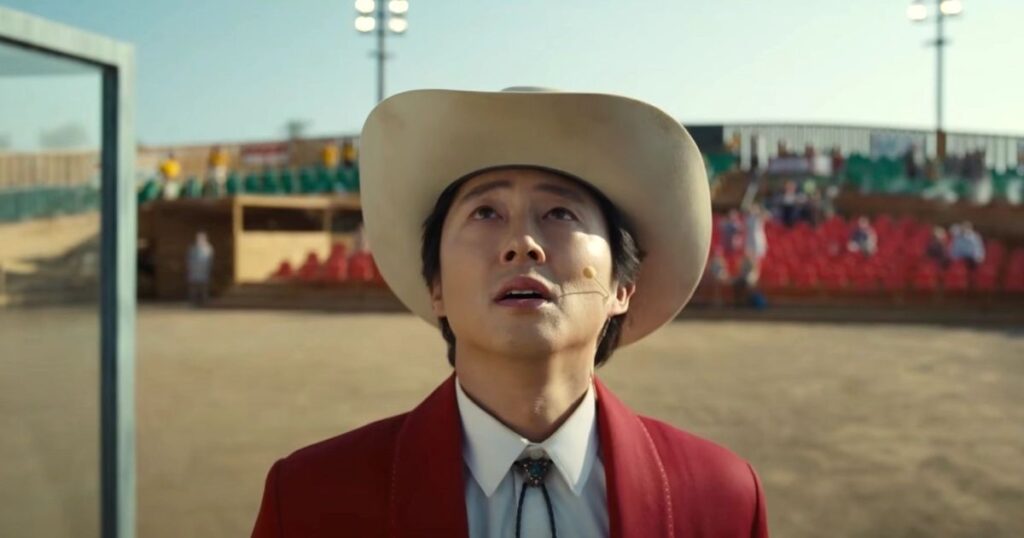
I’m not going to lie. I’m fascinated by Jordan Peele’s “Nope.”
Now that I’ve had some time to reflect on the film, I better appreciate what Peele has done. He swung for the fences in an industry that locks you in a batting cage. There’s something big and crazy and mystical about this movie that makes it unlike any other movie experience this year. And that’s to be admired.
But “Nope” is also a shining example of what an unfinished spec script looks like when it’s up on screen. It’s uneven. It’s sloppy. The main character isn’t very likable. The climax lacks clarity. You can feel the story trying to find itself as the movie is happening.
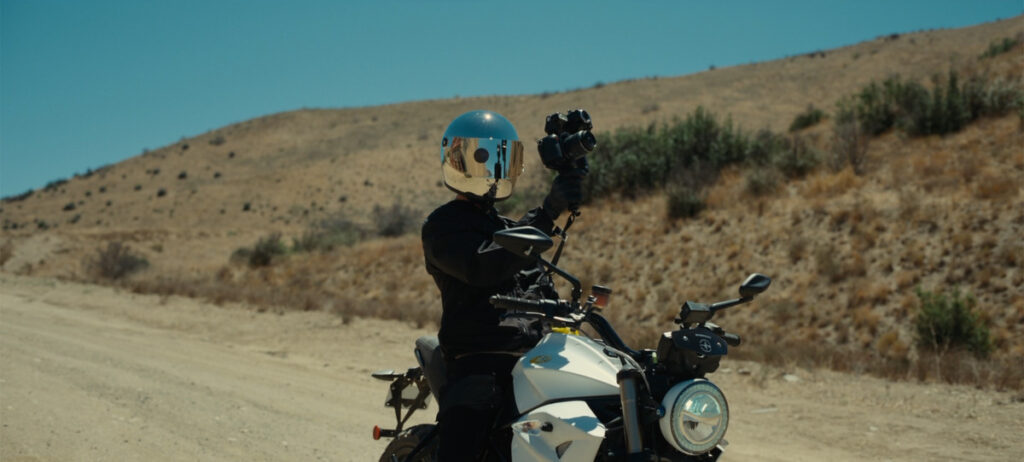 Who the f@%& is this character???
Who the f@%& is this character???
Which is what I want to talk about today. A finished script should never read like the writer is still playing with ideas, still trying to figure things out. Your script should have a certainty behind it. It should feel solid, like it always knows where it’s going.
To understand why this happens, you must first understand that a screenplay is a living breathing thing. We think we know our story when we start writing it. But, often times, we’ll discover new things that weren’t in the original plan. And, as an artist, it’s our duty to explore those new avenues to see if there’s anything there.
The most famous example of this is Good Will Hunting.
That movie started off as a thriller chronicling a genius mathematician who’s being pursued by the government for his abilities. But the drafts that Matt Damon and Ben Affleck were writing showed much more promise in the story’s character development, particularly the relationship between Will and his psychiatrist.
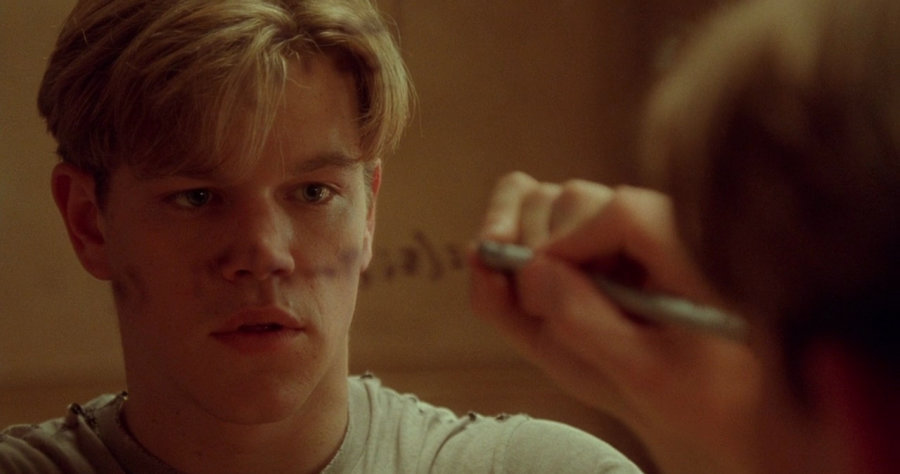
Matt and Ben did not want to change their story. But they were unknown back then and, in order to get the movie made, had to do what Castle Rock, who owned the rights, wanted them to do. So they scrapped the thriller angle and made it a character piece. The rest is history.
Part of what drafts 2, 3, 4, and 5 are about is identifying what’s working in your script and what’s not working, then leaning into the stuff that’s working. Just like Matt and Ben didn’t expect Psychiatrist Sean to be as interesting a character as he was, you might come up with a character, in the heat of writing, who you never thought of before you started, and that character might turn out to be a game-changer.
It’s in your best interest to then rethink your story to better incorporate that character. If that changes your movie – heck, even if it changes your genre – you have to consider it. That doesn’t mean you *have to* to deviate from your original vision every time this happens. But you should certainly weigh the pros and cons of the new option before writing it off.
I can’t help but think of this when reflecting on “Nope.”
Jordan Peele clearly had this vision of two Hollywood horse ranchers who discover that a UFO might be killing their horses. Admittedly, when you get that original idea in your head, it’s very hard to move away from it. So I suspect that once he had that idea, he never considered deviating. Which is too bad. Because it prevented him from writing a much better movie.
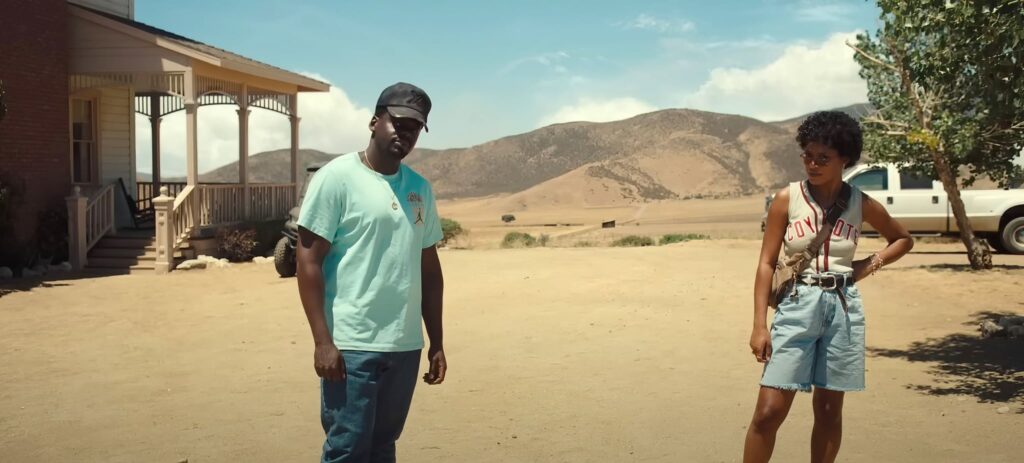
I don’t know how Peele conceived of the Ricky subplot. But based on his interviews and how obsessed he was with this monkey-massacre sitcom backstory, I assume it went something like this.
Peele had his crazy horse rancher UFO story over on one side. But he’d read about that story years ago (which we all did) about a monkey that tore its female owner’s face off. And he was so haunted by it that he just HAD to get it into his movie somehow. But how?
It would be too weird if the monkey massacre happened in the present. It would detract from the UFO-horse stuff. So he knew he had to put it in the past. Okay, well, how do we tie some crazed monkey backstory to the present? Maybe we have the woman whose face the monkey ripped off, many years later, involved in the story somehow.
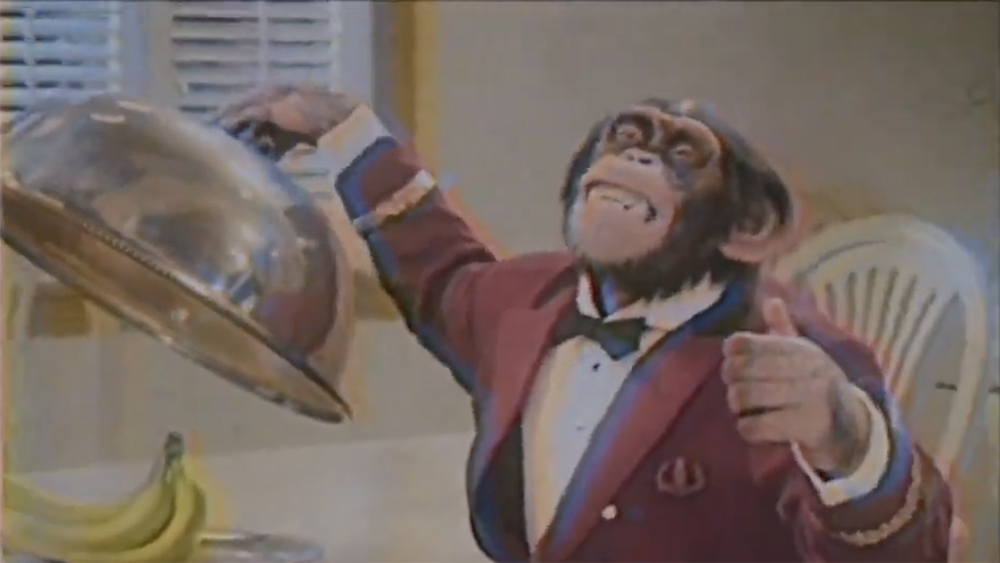
They have animals in movies and TV shows all the time. What if this monkey was on a sitcom? And he didn’t just tear one person’s face off, he went ballistic and started attacking everyone on set? Okay, that’s cool. What if there’s a kid on this sitcom and he somehow comes away unscathed? And what if, many years later, he has his own little Western theme park out in the boondocks, not far from our horse ranchers? Okay, now we’re gradually finding tentacles to connect these two storylines.
Unfortunately, that’s as far as Jordan Peele went. Ricky (the kid from the sitcom) was going to be a supporting character in the movie.
This is the critical moment as an artist where you need to step back and objectively ask the question: Which of my two storylines is more interesting? The former kid sitcom star who survived a horrific monkey attack that killed two of his cast members and ripped the face off another, who’s put together a theme park where he tries to lure in UFOs… or a couple of horse ranchers who occasionally rent their horses to Hollywood?
Is it even a competition?
One’s a 9 out of 10 on the interesting scale.
The other is a 4 out of 10 at best.
Not only that but you could easily slide many of the current story elements over to the Ricky plot. For example, Ricky needs horses too. So if you really wanted to do the horse thing, you still have your horses as a main part of the plot. You could’ve even kept OJ. Have OJ begrudgingly working for Ricky. When the sh#t hits the fan, Ricky and OJ have to team up, which, unlike what they currently have, would’ve been fun to watch, since OJ doesn’t like Ricky.
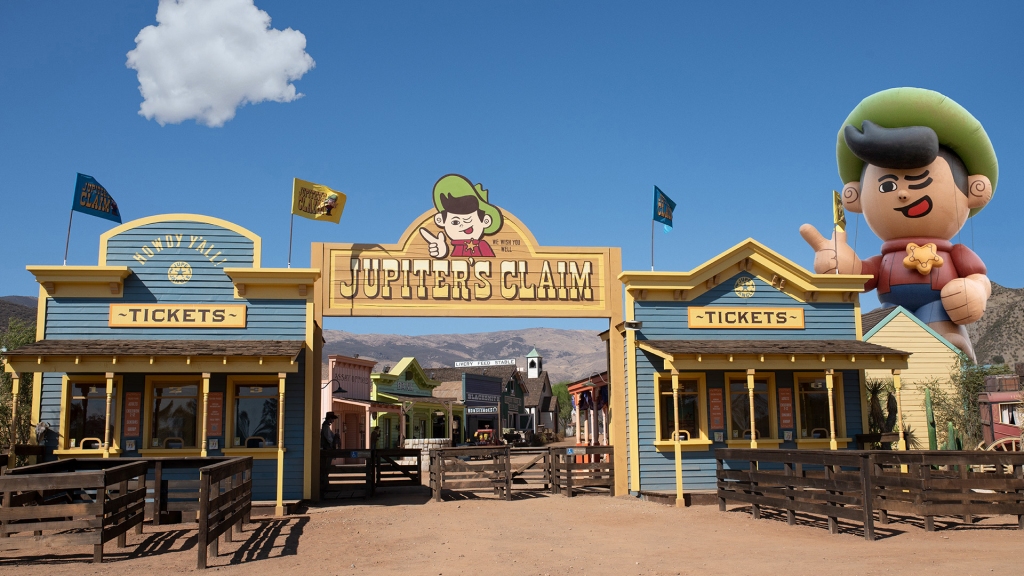
Now some of you may be saying, “Hold on, Carson. Let’s play this out with some other movies. What about Star Wars? Han Solo had a way more interesting life than Luke Skywalker. Are you saying that George Lucas should’ve scrapped the whole Luke Skywalker Obi-Wan journey and made Star Wars, “The Adventures of Han Solo” instead? Cause we later saw the Han Solo movie. And it sucked.”
Totally fair argument. But I would combat that by saying while, yes, Han was the cooler character, Luke and Obi-Wan had the way better story. And since Han becomes a big part of the team after they meet anyway, we get all the Han Solo we can handle.
Here, Ricky has the better storyline AND is the more interesting character. He has the better story because he has an actual theme park he’s running. He’s putting all his resources into this new show. He doesn’t know if it’s going to work or not. If it doesn’t, it might bankrupt his whole business. Just as I’m writing this out, I’m imagining a 20 times better movie.
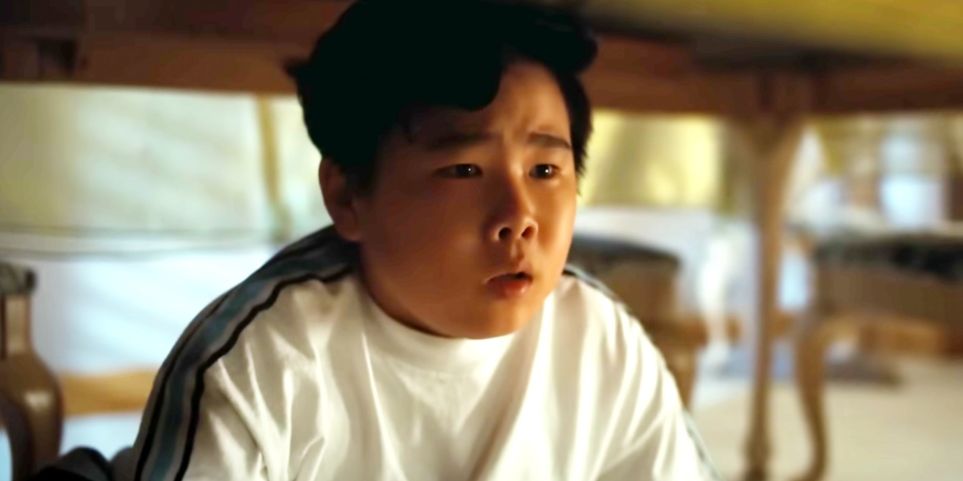
Ricky is also a guy who went through the most traumatic experience a kid could possibly go through. Yet here he is today, chipper and upbeat, always in a good mood. He clearly hasn’t dealt with that trauma. If we had more time with him, we’d be able to build more of an arc into that disconnect and see what happens when he finally breaks down and accepts what he saw.
So why did we build the story around the ranchers again?
One of two reasons, likely. As I said, once Peele locked into this idea of ranchers, he couldn’t let it go. He just had to tell the story from their point of view because they’re who he originally envisioned going through this. Another possibility is that he simply ran out of time. Unlike his 10 year journey writing Get Out, I’m guessing Universal dictated the release date of this film, which was strict enough that it prevented Peele from writing as many drafts as he would’ve wanted.
Which sucks because, he might’ve eventually figured this out. It’s clear to everyone who watched the movie that he was way more into Ricky’s storyline than the ranchers. That whole world of Ricky’s was like a sandbox full of toys. Every direction you looked (his current rodeo show, his old sitcom, killer monkeys, a weird theme park, maimed co-workers from his past) there was something to play with. Yet we instead get scenes like being stuck in Angel’s apartment while our three loser protagonists smoke weed together. It’s like, “uhhhh, I think there’s a better movie over this way, guys?”
Use this as a cautionary tale. Our minds are wonderful creative instruments and, sometimes, they come up with inspiration in the most unexpected of places. It could be that you’re writing a zombie movie and conceive one of your characters as an amazingly weird and captivating chess player. If Chess Guy is, far and away, the best thing about your zombie script, maybe you shouldn’t be writing a zombie script anymore.
Believe me, I know these choices aren’t easy. The more time you’ve invested in a storyline, the less motivation you have to change it. And, of course, there’s the danger of changing your mind *too much*. If you keep changing your script’s direction every time you come up with a new idea, you’re never going to finish. But if you encounter a scenario like Jordan Peele’s, “Nope,” where the subplot is actually way cooler than the main plot, you have to at least entertain the change. Cause I believe Jordan Peele missing the cue that Ricky was the main plot for Nope was the difference between making an okay movie and a great one.
Are you looking for help on your latest screenplay? – Let someone who’s read over 10,000 scripts identify your screenplay’s weak points and how to fix them. I have a 4 page notes package (2300-2500 words) or the more detailed 8 page option (4600-5000 words). I also give feedback on loglines, outlines, synopses, first acts, or any aspect of screenwriting you need help with. This includes Zoom calls discussing anything from talking through your script to getting advice on how to break into the industry. If you’re interested, e-mail me at carsonreeves1@gmail.com and let’s set something up! I look forward to working with you.
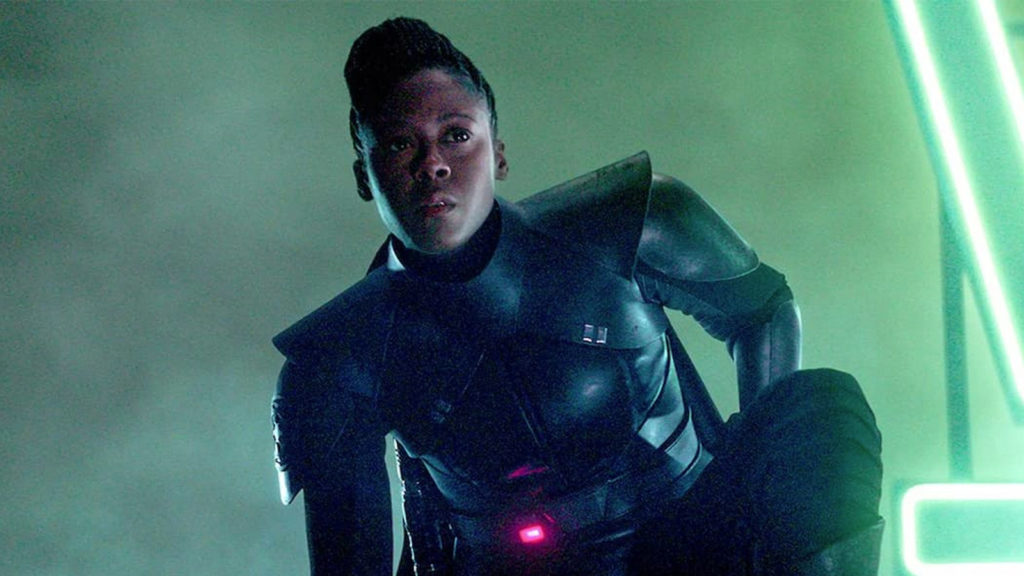
I’ve got a 2500 word Obi-Wan Kenobi review. Yes, I talk all about Baby Leia, Reva, eopies, and the dangers of Dave Filoni having too much creative control over the Star Wars universe. I also dive into the biggest trailer release month of the decade, breaking down Thor, Gray Man, Mission Impossible, She-Hulk, Andor, and more. I also take a trip into the past to see why A New Hope is so much better than the Star Wars content being released today. I come up with some amazing revelations that surprised even me. We’re talking stuff that would turbo-charge the screenwriting world if writers went back to doing it.
If you would like to read my newsletter, e-mail me at carsonreeves1@gmail.com and I’ll send it your way.
P.S. There is no post Monday because it’s Memorial Day here in the U.S. (a big holiday). But I’ll have a Top Gun Maverick review for you on Tuesday. See ya then!
